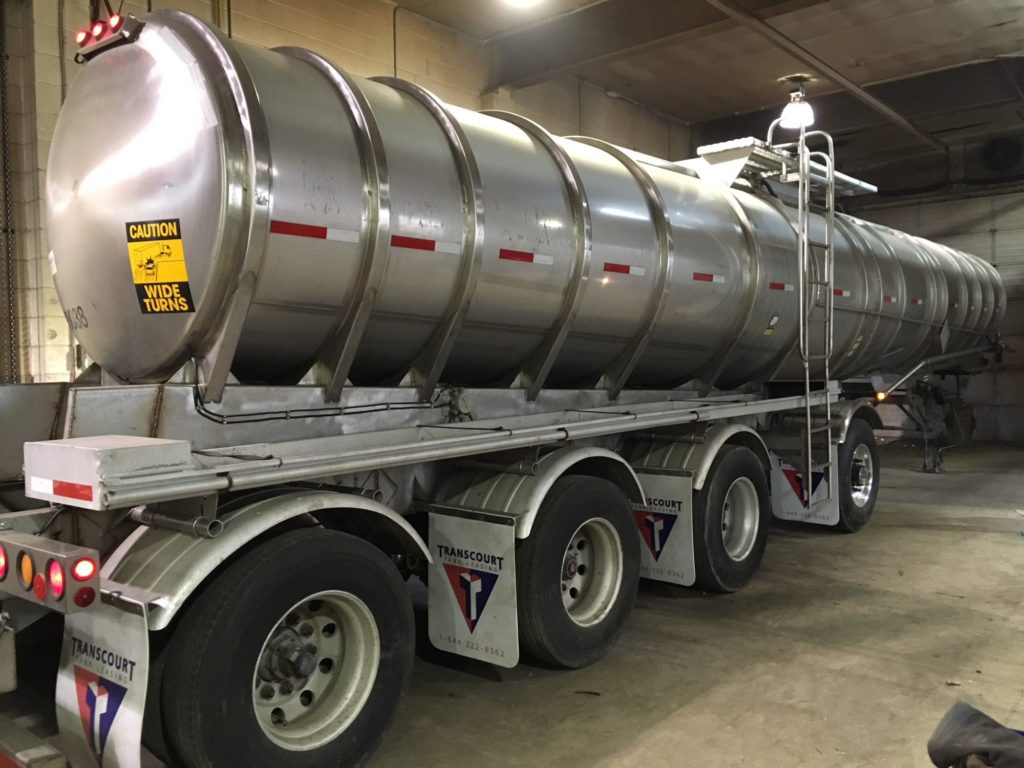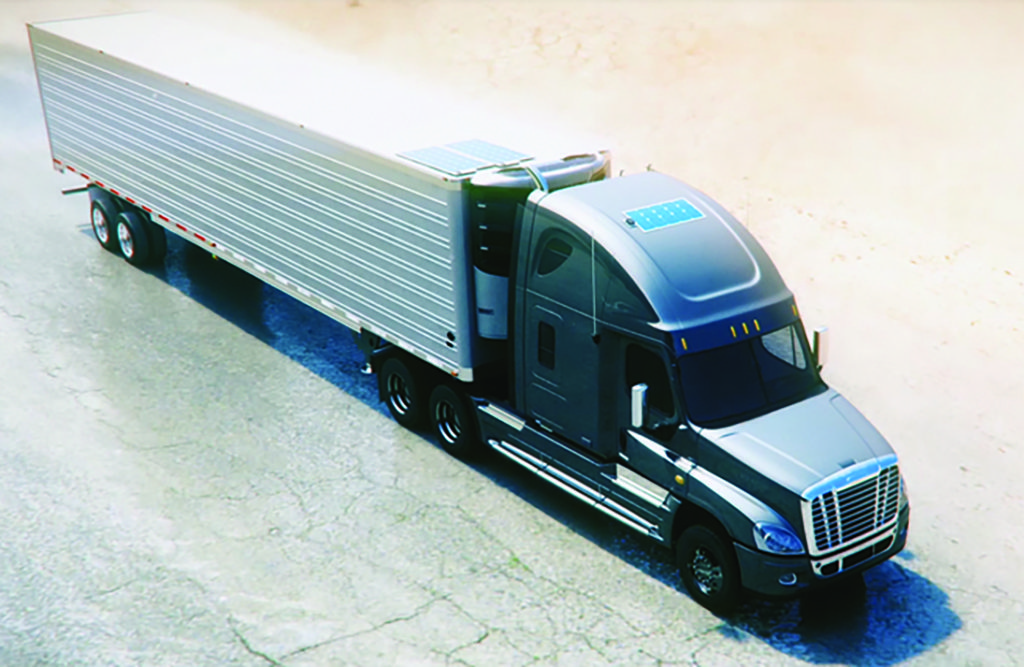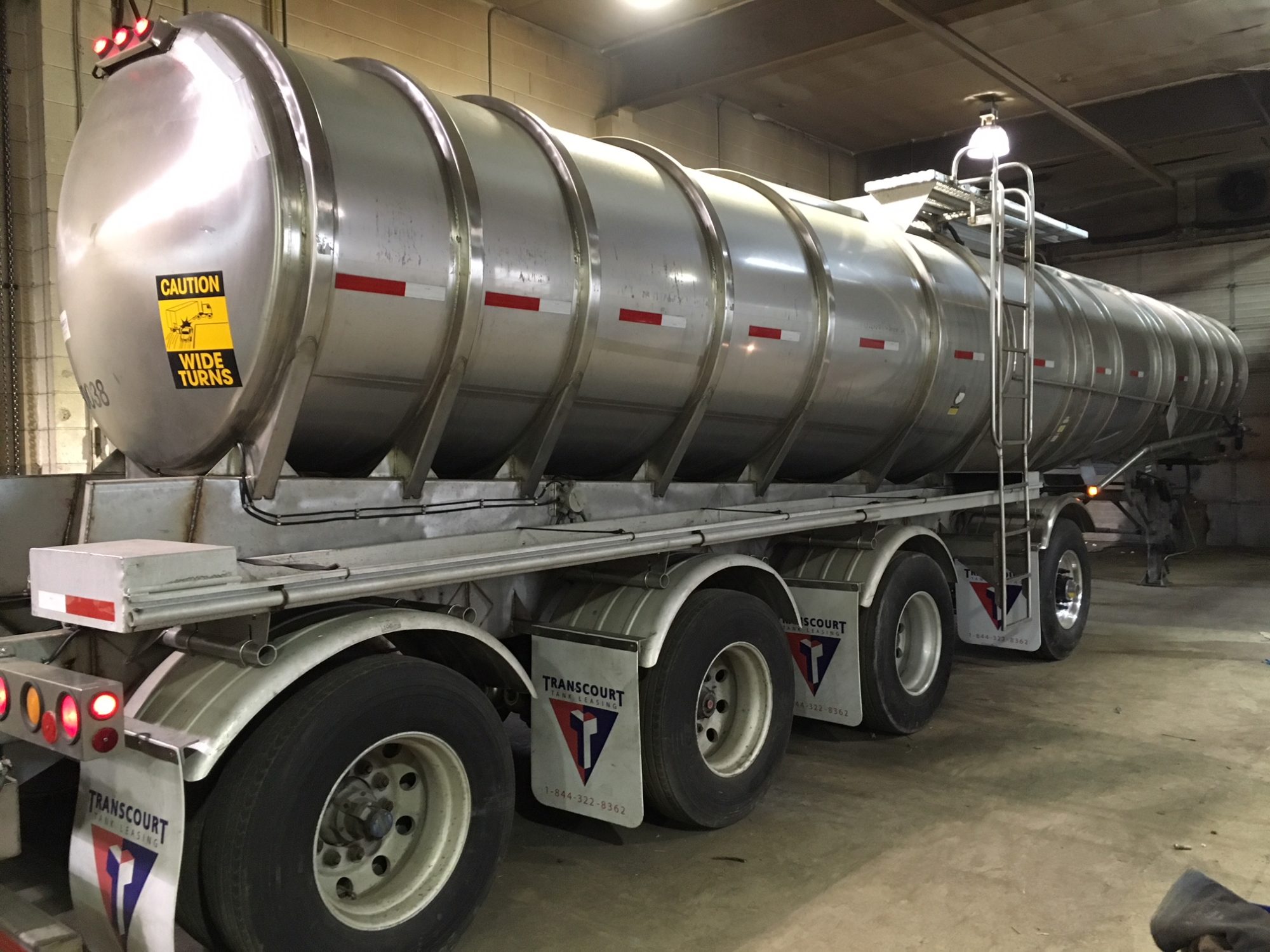TORONTO, Ont. — Maintaining a fleet of trailers is complicated enough, but specialty trailers pose their own unique challenges. The more complex a trailer design is, the greater the potential for maintenance-related headaches.
We caught up with maintenance professionals to find solutions to common problems encountered by operators of tankers, liftgate, and live-bottom trailers.

Be sure to grease the fifth wheels when working on specialty tankers.
Tanker troubles
Asked what maintenance items are most frequently overlooked on tanker trailers, Mike Trianos, director of fleet services and procurement with Transcourt Tank Leasing, is quick to cite poorly greased fifth wheels and fifth wheel compensators, especially on B-trains.
“B-trains are not uncoupled regularly, and making sure they are properly greased is important and should be a part of a regular PM inspection,” Trianos said. “The other is under-greased kingpins on liftable steer axles. Repairs to the kingpins can cause unnecessary downtime and are expensive repairs if neglected, especially when seized due to a lack of grease.”
The key to quickly identifying maintenance-related issues on tanker trailers is to keep them clean.
“Dirt, salt and road grime, if left to build up, will cause grease to dry prematurely on moving parts in contact with each other,” Trianos explained.
Dirt and mud can also obscure potential defects, requiring the attention of the maintenance department. And dirty tankers also project the image of a poorly maintained fleet.
“Tank trailers should be washed on the exterior often to keep them clean, making it easier to identify leaks and maintenance issues,” Trianos advised.
Interior washes between loads are equally important, but Trianos said the industry does a good job at interior tank cleanliness.
Trianos also emphasized the importance of proper brake, tire, and gasket inspections and maintenance.
“Brakes is an obvious one, however, proper tire air pressures and gaskets should get the same attention,” he said. “Liquid tank trailers are designed right from the specification stage to haul the maximum payload available. Properly inflated tires not only maximize fuel mileage but can also prevent blowouts and premature tire wear. Gaskets on a tank trailer are an integral part of containing sometimes dangerous or flammable liquids from leaking into the environment.”
Trianos suggested tanker fleets refer to detailed preventive maintenance inspection lists, which are customized for each tanker type of application.
“There are different types of tank trailers. We gear our PM inspections towards each type of trailer. We don’t have a blanket PM sheet for all trailers. Each individual specification of the trailer has its own PM inspection list,” Trianos said.

Solar power can be used to ease battery demands for everything from reefers to liftgates.
Power problems
The biggest struggle in maintaining a fleet of liftgate trailers — or for that matter, straight trucks with liftgates — involves keeping the batteries powered. More fleets are taking advantage of the sun to take care of this task.
Speaking at the FTR Transportation Conference in Indianapolis, Ind., in September, Jeff Kauffman of Tahoe Ventures urged fleets to consider how solar power can be harnessed to power liftgates. He said the cost of solar panels are decreasing, providing fleets with a payback of one to two years.
“One to two years on a truck asset of five to six years is not a big deal,” he said. “On a trailer asset of 12-15 years, that’s very big. With credits, break-even comes to under one year. You can save US$3,000 to $10,000 per year bringing in solar.”
A 100-watt solar panel (measuring 4×2 feet) can reduce liftgate battery failures, maintain the truck batteries’ charge, and run the truck’s telematics. A 300-watt panel, which fits neatly on the tractor’s roof fairing, can power the liftgate, extend non-idle HVAC time by three to four hours, and maintain the truck’s primary batteries.
Solar panels can be mounted to the tractor or the trailer. But ensure you purchase solar panels designed for transportation applications, urged Paul Kroes, power solutions business development manager for Thermo King.
“Customers go out there, go online or to Canadian Tire, and get a panel for $100 that looks like it’s going to do the job. It comes down to the design for the environment,” Kroes warned. “The solar industry only ever designed for stationary applications. They never had to worry about going down the road, vibrating, 70-mph winds, rock debris, tree limbs, corrosion. All that stuff destroys your standard solar system very quickly and a lot of people don’t understand that.”
Choosing a solar solution not designed for mobile applications can cause more maintenance headaches than it resolves. Thermo King’s solar panels are designed to last the entire 15 to 20 years a trailer may remain in service.
Solar panel installation is simple, and once installed, no further maintenance is required. Kroes said demand for solar solutions is increasing.
“As these operations get more sophisticated and efficient, they realize the cost of a failed battery isn’t just the cost of replacing the battery. It’s the service call-out charges, which at 3 a.m. are fairly expensive, the cost of the downtime, the risk they run of spoiling a load,” he pointed out. “Their horizon has expanded now to the point they realize it’s not just the battery they are protecting.”

Live bottoms are more than trailers alone. Think of them as machines on wheels.
Stayin’ alive
Live-bottom trailers, with all their moving parts, present their own set of challenges and headaches to maintenance departments. But the trailers continue to gain popularity, primarily because of their safety advantages over traditional end dumps, and are a requirement on certain job sites.
Customers appreciate the versatility of live-bottom trailers, but must also keep in mind their unique maintenance challenges.
“Basically, this is not a normal trailer. It’s a machine on wheels,” said John Rogasky, dealer sales support manager for Trout River dealer Arne’s Welding and Trailer Sales. “You have to keep that in mind, and this machine has lots of moving parts. The more moving parts there are, the more maintenance that’s required. When we are looking to sell these products to customers, we are very sure to point out that maintenance is high on these things.”
The chain used to move product out the rear of the trailer needs to be lubricated every day. While live-bottom trailers have onboard lubrication systems, the driver must remember to turn the lubrication system on and to run the belt twice before each shift.
A series of crossmembers supports the chain, and must also be inspected regularly, Rogasky explained.
“These are built of T1 steel, but they can be damaged,” he said. Bent crossmembers distort the distance between the chains, putting higher tension on the chains. Trout River trailers have crossmembers that are easy to replace as they’re bolted in rather than welded.
The belt, which carries the product, must also be inspected regularly.
“You have to watch for tears or rips on the belts and seals,” noted Rogasky. Even so, the belt and chain will likely have to be replaced after five to seven years of use.
“The key is to keep the maintenance as high a level as possible,” Rogasky said.
And while much attention must be given to a live bottom trailer’s belt and chains, it’s equally important to maintain the more conventional trailer components.
“You can’t forget about the undercarriage,” said Rogasky. “The wheels, tires, slack adjusters – make sure they’re greased and lubricated as well.”
With live-bottom trailers, a thorough pre-trip inspection is crucial. “Check things like oil leaks, gate seals, and rubber seals all around these things,” Rogasky advised.


Recent Comments